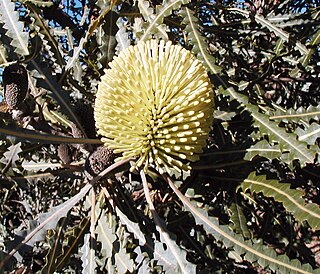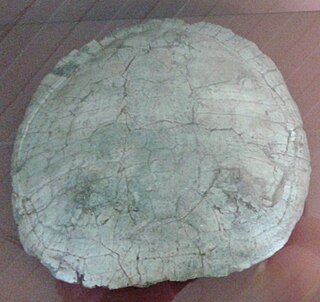Related Research Articles

Caenorhabditis elegans is a free-living transparent nematode about 1 mm in length that lives in temperate soil environments. It is the type species of its genus. The name is a blend of the Greek caeno- (recent), rhabditis (rod-like) and Latin elegans (elegant). In 1900, Maupas initially named it Rhabditides elegans. Osche placed it in the subgenus Caenorhabditis in 1952, and in 1955, Dougherty raised Caenorhabditis to the status of genus.
Palma or La Palma means palm in a number of languages and may also refer to:

The king rail is a waterbird, the largest North American rail.

Trachemys is a genus of turtles belonging to the family Emydidae. Members of this genus are native to the Americas, ranging from the Midwestern United States south to northern Argentina, but one subspecies, the red-eared slider, has been introduced worldwide. Species under this genus are commonly referred to as sliders.

Cuba, officially the Republic of Cuba, is an island country comprising the island of Cuba, as well as Isla de la Juventud and several minor archipelagos. Cuba is located where the northern Caribbean Sea, Gulf of Mexico, and Atlantic Ocean meet. Cuba is located at the east of the Yucatán Peninsula (Mexico), south of both the American state of Florida and the Bahamas, west of Hispaniola, and north of both Jamaica and the Cayman Islands. Havana is the largest city and capital; other major cities include Santiago de Cuba and Camagüey. The official area of the Republic of Cuba is 109,884 km2 (42,426 sq mi). The main island of Cuba is the largest island in Cuba and in the Caribbean, with an area of 104,556 km2 (40,369 sq mi). Cuba is the second-most populous country in the Caribbean after Haiti, with over 11 million inhabitants.

Banksia elegans, commonly known as the elegant banksia, is a species of woody shrub that is endemic to a relatively small area of Western Australia. Reaching 4 m (13 ft) high, it is a suckering shrub that rarely reproduces by seed. The round to oval yellow flower spikes appear in spring and summer. Swiss botanist Carl Meissner described Banksia elegans in 1856. It is most closely related to the three species in the subgenus Isostylis.

Sideroxylon is a genus of trees in the family Sapotaceae described as a genus by Linnaeus in 1753. They are collectively known as bully trees. The generic name is derived from the Greek words σιδηρος (sideros), meaning "iron", and ξύλον (xylon), meaning "wood."
The Cheiridioidea are a superfamily of pseudoscorpions. The superfamily contains two families:
Tetrazygia elegans is a species of plant in the family Melastomataceae. It is endemic to Cuba.
Coccothrinax elegans is a palm which is endemic to Cuba.

Chonetes is an extinct genus of brachiopods. It ranged from the Late Ordovician to the Middle Jurassic.

The ashy gecko is a species of gecko native to Cuba and Hispaniola. It is a small species, dark in color with many white spots. It is also a good climber. Ashy geckos have been introduced to a few small islands in southernmost Florida, and have established populations there.
Pseudarmadillo is a genus of woodlice from the Greater Antilles. All extant species live in Cuba, with one species also extending to the Bahamas:
Camarotoechia is an extinct genus of brachiopods found in Paleozoic strata.
Cryptocheiridium is a genus of pseudoscorpions in the family Cheiridiidae.

Catenipora is an extinct genus of tabulate corals in the family Halysitidae, known from the Ordovician to the Silurian.
Praepodes elegans is a species of weevils. It is found in Cuba.
Cubanohydracarus is a genus of mites in the family Hungarohydracaridae. It is a monotypic genus containing only the species C. elegans. It is found in Cuba.

Bauruemys is an extinct genus of turtles in the family Podocnemididae.
Asterella elegans, the elegant asterella, is a species of liverworts in the family of Aytoniaceae. It is found in Texas, Mexico, Guatemala and Cuba.
References
- ↑ Représentants de la fam. Cheiridiidae Chamberlin (Pseudoscorpionidea) de Cuba. M Dumitresco, T Orghidan, A. Nunez Jimenez, V. Decou, ST. Negrea & N. Vina Bayes (eds): Résultats des Expéditions Biospéologiques Cubano-Roumaines à Cuba 3, pages 77-87, 1981
- Kůrka A. (2007): České názvy živočichů VI. Pavoukovci (Arachnida). IV. Bičovci (Amblypygi), Štírenky (Palpigradi), Štírci (Pseudosciorpiones), Roztočovci (Ricinulei), Krátkochvosti (Schizomida), Solifugy (Solifugae), Bičnatci (Uropygi), Národní muzeum (zoologické oddělení PM), Praha, 128 pp